Deep into the border country of south Texas, intent on photographing rare birds along the Rio Grande, a cloud-covered sky broke in the west to beam sunshine just before sunset. As I passed a pool of rainwater being assaulted by a flock of Long-tailed Grackles I thought it might be worth checking out before the last sunlight vanished. It was one of those flash decisions you make as you’re working against the clock. In this case, with sunset colors reflecting off the water and enough light to illuminate the iridescent hues of the grackles’ plumage, it turned out to be a lively photo session.
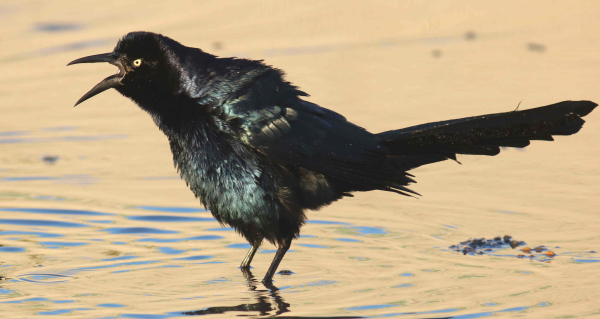
I eased into position with the sun at my back and the rainwater pool before me. But there was one more factor to address: The colorful clouds overhead were not uniform, so it was a matter of positioning where the best sunset colors were mirrored in the water, providing for the best chance of a vivid setting for the big grackles. I turned off the engine of my mobile blind (van), and waited for grackles to move into position as a flurry of them drank and bathed nearby. After just a few ticks of the clock, a couple big males muscled their way forward to claim a square foot of waterscape, punctuating their advance with loud wild calls. As birds moved into place I began photographing, emphasizing action or interactions.
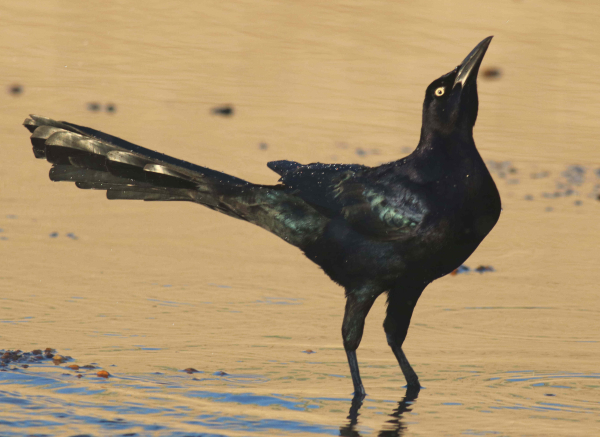
As the sunset colors developed there were areas of rainwater that reflected amber, blue, and eventually orange hues from the sky and clouds, so in addition to trying to follow the birds as they waded into the water, drank, bathed, and interacted, I was always aware of the changes in background colors in the water and along the shore.
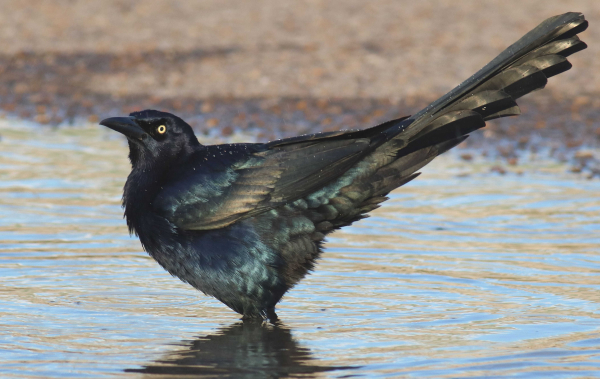
As grackles moved into position, I made it a point to focus on one eye, which would ensure the rest of the bird would be in focus. The light was not full strength, so I was doing some adjustments to make sure there was an adequate depth of field, while keeping the shutter speed fast enough to stop the action of bathing birds. I always suggest using the AV setting on your camera, which keeps the f-stop you choose static, while the shutter speed varies slightly as the light fluctuates. A standard f8 aperture setting worked perfectly.
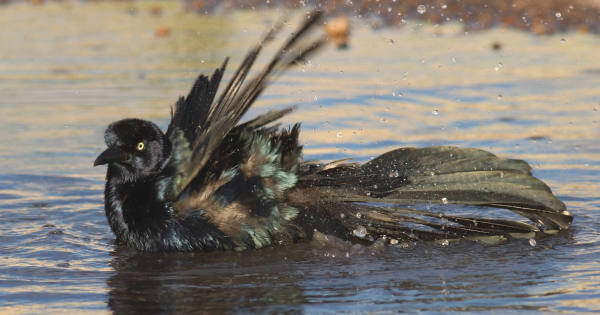
Focusing on individual birds, I was quickly aware of the colors being highlighted as the light reflected shades of blue and violet on the usually black iridescent plumage. Sunlight also emphasized the outlines of individual feathers in the tail, wings, and body, and provided a lively reflection in their beak and eyes. I checked the colors on photos periodically on the LCD monitor on the back of my camera. The action, light, and colors were changing moment to moment with the movements of the sun, clouds, and birds, as I took a series of photos emphasizing action and colors. Foremost, the birds dictated my photography choices and I thoroughly enjoyed being in the midst of this avian action during the half-hour before sunset.
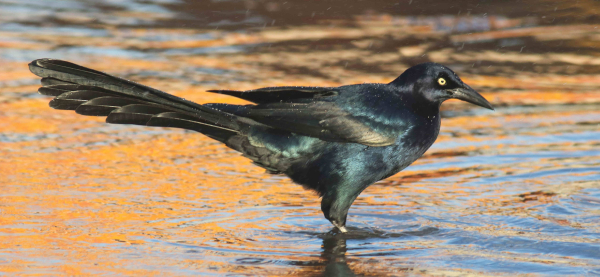
Just as the sighting of a given bird can quickly change everything during a birding session, finding a photo opportunity like the grackles at the sunset rainwater pond is a unique and fleeting opportunity to take advantage of – immediately – and make the most of it, using your experience and equipment to produce a series of photos that showcase the birds and your appreciation of them and their activities. Birds inspire us, attract our attention, and command our interest; and realistically, there is little in this world that can do that or give us such joy – especially when we review the photos, relive the moments, and appreciate the images created with our camera. Those moments press us back into the wild in search of the next opportunity to document the beauty, behavior, and intensity of birds, while gleaning a level of natural bliss within ourselves.
Article and photographs by Paul Konrad
Share your bird photos and birding experiences at editorstbw2@gmail.com